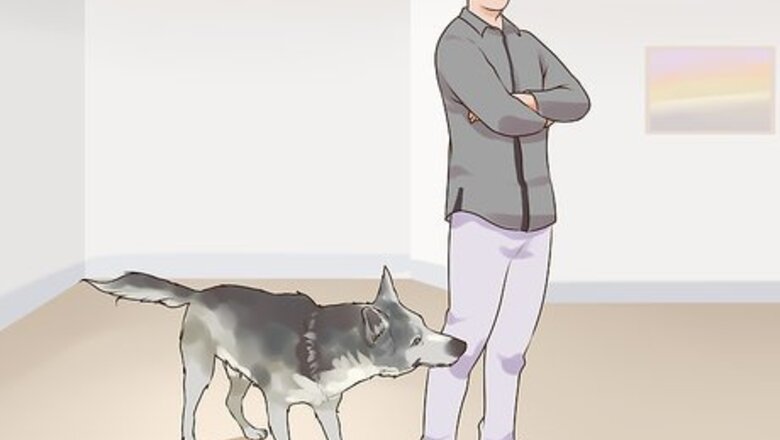
views
Approaching the Dog Carefully
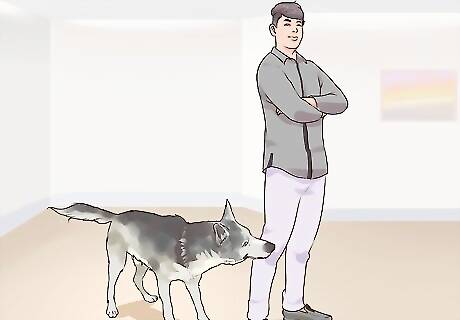
Allow the dog to initiate contact. Go about your business as usual and refrain from reaching down to touch the dog, unless it shows a direct interest in you. It is quite possible that it will grow increasingly curious about you and will try to nudge or bump you for contact. If this happens, just stand still until the dog has had its fill.
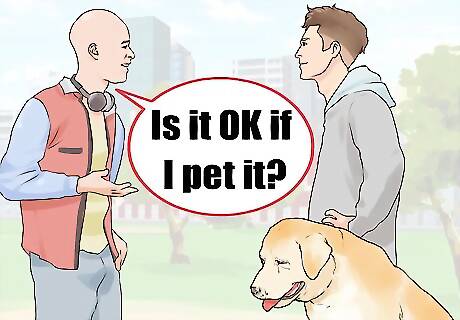
Request the assistance of the owner. If this is not your dog, it is a good idea to ask the owner, if present, if it is okay to pet the animal. They will generally decline if the dog is aggressive and then you’ll know that bonding will have to occur at a distance, if you want to try at all. If you see an aggressive dog running around without an owner, it is a good idea to keep your distance and call your local animal control office for assistance. With an owner, you might say, “What a pretty dog. Is it okay if I pet it?” With an openly hostile and unaccompanied dog, it is probably not a good idea to get close enough to attempt to read the tags. The dog may bite or scratch you. Instead, wait for the animal control officers.

Avoid making direct eye contact. Looking directly into a dog’s eyes will generally be interpreted as an aggressive act, which will be returned in kind. Instead, try to find a focal point directly above the dog’s head. You can also look at one of the dog’s ears or its collar instead. If you accidentally look directly at the dog, quickly flick your eyes away. This will often prevent any additional conflict.
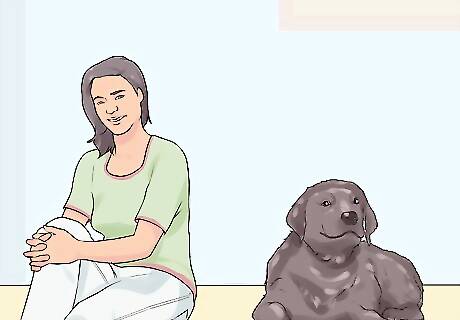
Interact with the dog from the side. Whether you are sitting, standing, or crouching, try to position yourself at a non-direct angle to the dog. If you interact with the dog in a head-on way, it may increase the aggression. Don’t be surprised if the dog readjusts to directly face you. If this happens, simply slightly shift over to get off-kilter again.
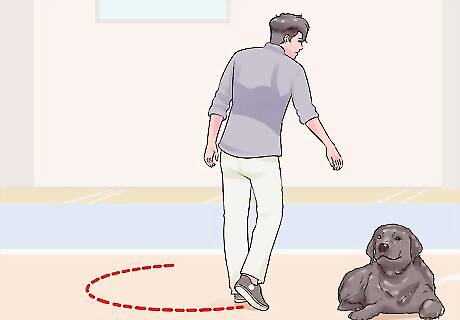
Approach very slowly. If you do decide to get closer to the dog, don’t move in a straight line. Instead, walk in an arc, aiming to get closer to the side of the dog. Only take a few steps at a time and pause if you sense any increasing signs of aggression.
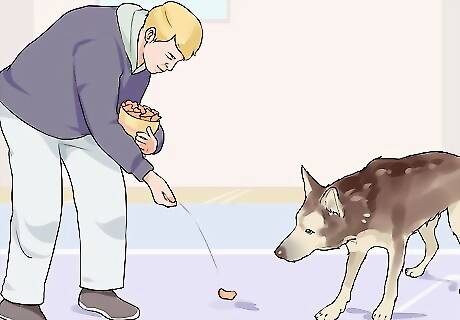
Throw a few treats down on the ground. Offering a treat directly by hand isn’t a good option when interacting with an aggressive dog. But, you can toss a handful of small treats, such as little pieces of cheese, near to the dog. If the dog remains hesitant, try looking away for a moment to encourage it. If this is not your dog, make sure that you get the owner’s permission before offering any food. It is possible that it may be on a special diet or may react poorly to food treats. This is an especially good method of positive reinforcement for dog owners to use. Your dog may associate you with good food and may even look forward to your attentions.
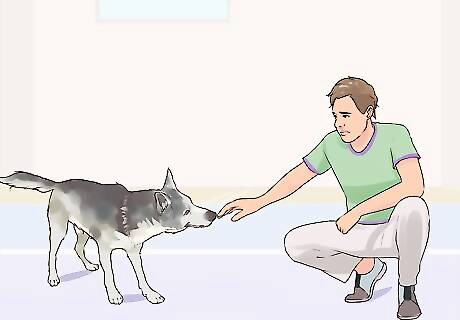
Extend a single hand for the dog to sniff. If you’ve spent enough time with the dog for it to positively respond to you, it may be time to take the next step. Slowly position yourself closer to the dog and then reach out with a single hand. Keep it palm up and just hover it in the air for a bit. If the dog sniffs you, that is a good sign. If not, you can always try again in a bit. Be very careful with this step as it makes you vulnerable to an attack. Watch the dog’s body language closely. If the dog growls, begins pawing the ground, or lays its ears back, then it is probably best to stop and try again later. If the dog loosens up enough, you can even try petting it gently. But, keep your petting to the side or back of the dog’s body. Stay away from the dog’s face.
Being Consistent and Supportive
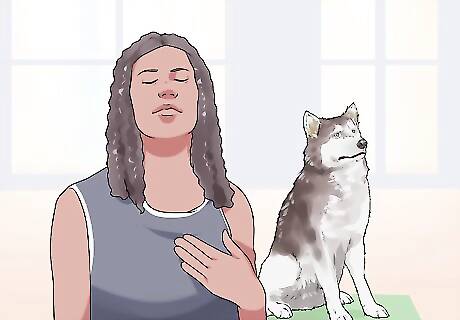
Stay patient. Remind yourself about the positive traits your dog possesses. For example, it might be super cuddly with its favorite toys. You will likely face setbacks when trying to break through with your dog just stay the course and keep trying to make progress. If you get too frustrated, give yourself a bit of distance from your dog and regain control before interacting again.
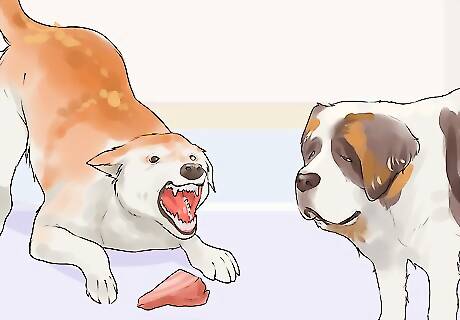
Know your dog’s triggers. Spend some time observing your dog’s everyday behaviors. Does it get frightened and turn aggressive during a thunderstorm? Is it afraid to have men approach? It is angry and protective over food? Map out those areas that lead to poor behaviors and try to avoid them. Set your dog up for success. You will be at an even better advantage if you have an idea of your dog’s past. For example, if your dog faced starvation when it was younger, it will likely exhibit food protectiveness. Therefore, feeding times will not be the best times for an initial approach. Don’t discount the possibility that you may be the cause of the aggression. It is possible that the dog is reacting poorly to your very presence. If this is the case, you should know that it will be tougher to bond with it.
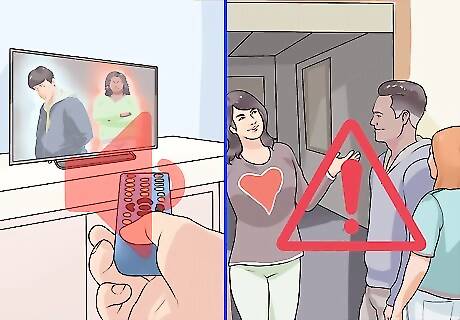
Interact in a calm and relaxing environment. Dogs can sense stress and will respond negatively to it. Keep loud distractions in your home to a minimum, such as turning down the TV. Limit large gatherings of people. Keep your house neat and clean without lots of tempting non-dog toys. To make this work, you will want to enlist the aid of anyone living in the household. Work together to be consistent in your interactions with your dog.
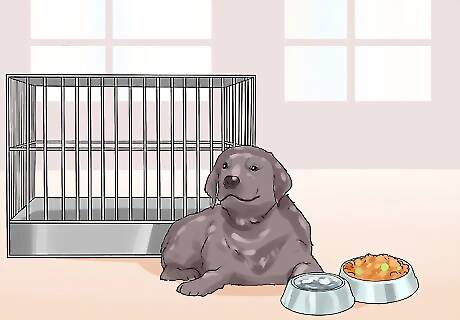
Give your dog its own space. Dogs do best when they have a bit of private territory that they can claim as their own. Place your dog in a crate for a limited part of the day and then leave the crate open and accessible. Put all of your dog’s toys and food and water bowls in one area of the house. Keep this area off-limits for children and other pets.
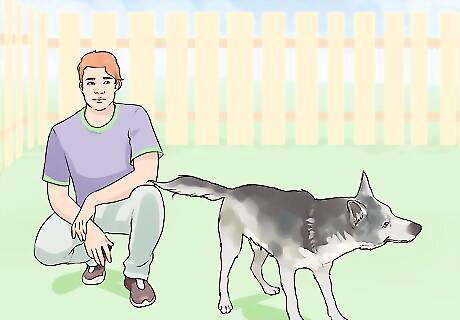
Spend time together relaxing. It is a common thing for owners to shy away from spending time with aggressive pets. But, that only leaves your dog with excess energy to burn. Instead, take your dog on controlled walks, or spend time lounging in your backyard with no one else around.
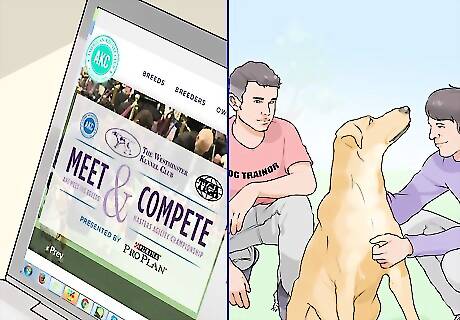
Consult with a dog trainer. You can either ask a dog specialist to come to your home or you can arrange to attend a dog obedience class. For dogs with severe aggression (especially towards other dogs), a private session is probably the best option, at least initially. Find a certified dog trainer in your area by searching online or by contacting the American Kennel Club (AKC) in your area.
Watching for Warning Signs

Be careful. Make sure to watch out for your well-being and that of others when you are attempting to interact with an aggressive dog. Some dogs may lash out without fully realizing what they are doing, so reason is not always effective or useful. Only go as far as you feel comfortable and know that some dogs will never fully become the stereotypical friendly companion.

Look for aggressive posturing. When a dog turns aggressive, it will move its body into an attack position. It might crouch lower to the ground in preparation to spring. Or, it might lunge forward and backwards. It could also try to move to the side of your body to prepare for a blind attack. Be warned if a dog looks directly into your eyes and tries to maintain direct eye contact. This is intended as an aggressive move. To try to diffuse the situation, keep moving your gaze to another part of the dog’s face, such as its left ear. But, continue to watch the dog in case it decides to move toward you.

Look for unwanted herding behaviors. A dog might lower its head and try to push against your leg repeatedly. Or, it might nip at your leg or foot to get you to move in a certain direction. These nips could turn more aggressive if you refuse to comply. Cross your arms across your chest, or just keep your hands higher up, in order to avoid being nipped. Repeat the command, “No,” in a firm voice. Hold your ground or move slowly in another direction, keeping your eyes on the dog at all times.
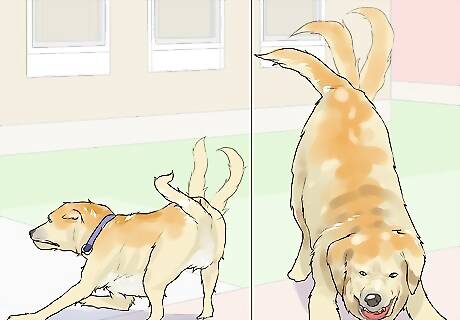
Pay attention to tail movements. The tail is a good indicator of a dog’s feelings. However, it is easy to misread. Just because a dog moves it tail in a “wagging” motion doesn’t necessarily mean it is feeling friendly. A dog can also “wag” in an agitated way. Look for loopy, uncontrolled motions as an indication of friendliness. An agitated wag is more stiff and controlled. Watch for a tail that moves in a tight, horizontal motion.
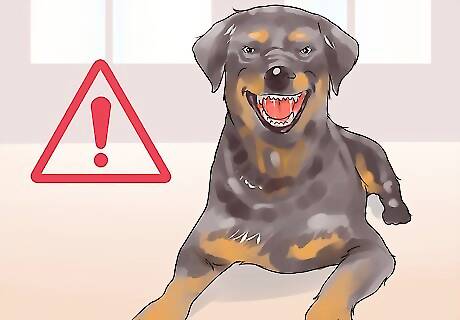
Watch for growling or teeth baring. This is what most people will look for right away, and it is a clear sign of aggression. A dog showing its teeth is also giving you a warning. If you respond to this warning, there is a good possibility that the dog will back down. You can respond by saying, “No,” in a calm voice. Or, you can totally ignore the behavior, while watching the dog closely. If you choose to back away for your own safety, do so slowly with your body still facing the dog.
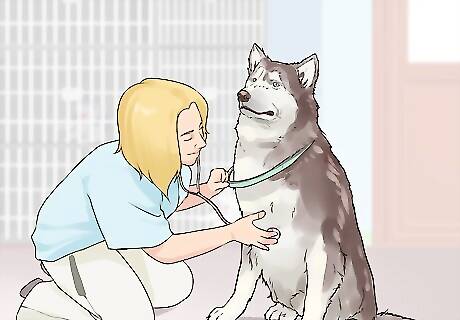
Consult with a veterinarian. If you experience any signs of aggressiveness with your dog, it is a good idea to meet with your vet and ask for advice and assistance. They may inspect your dog for a physical cause, such as arthritis, behind the aggression and pain. Or, they might suggest a particular dog trainer or type of training. Your veterinarian may recommend the use of special collars and leashes to prevent your dog from approaching or biting other people and animals. Your dog’s veterinarian may also recommend an anti-anxiety medication to help keep your dog calm.




















Comments
0 comment